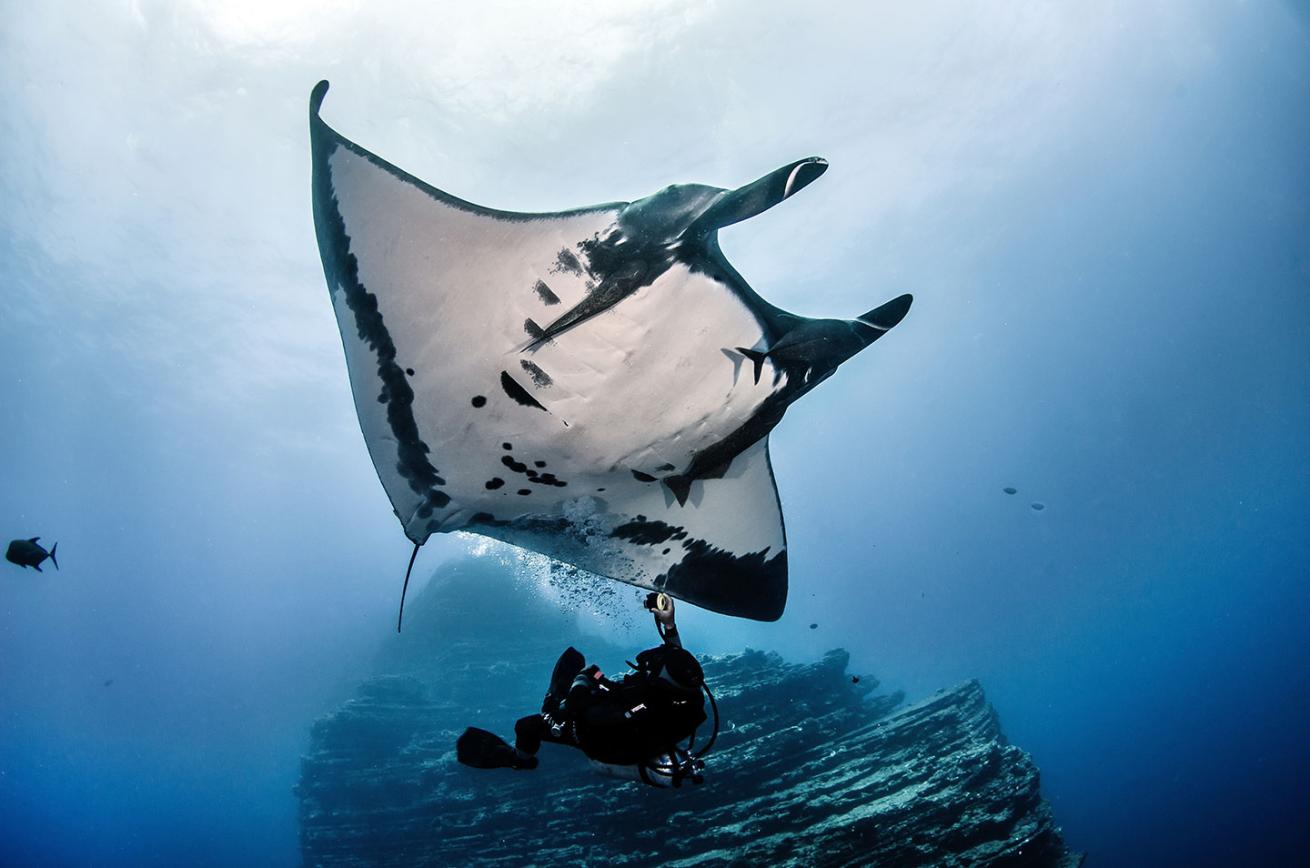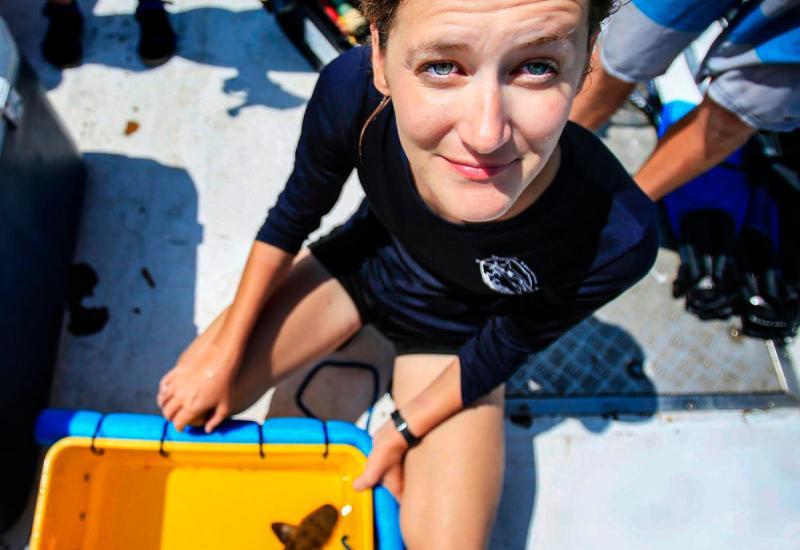Giant Manta Rays of the Pacific Are Deep-Ocean Predators

ShutterstockThe giant oceanic manta ray (Manta birostris) is the largest type of ray in the world.
We scuba divers often admire them for their acrobatic, soaring behavior at cleaning stations in places like Indonesia’s Manta Sandy in Raja Ampat. But we’ve probably thought very little about what their lives are like — where they live, how deep they go, and where they find their dinner.
A new scientific study into the food sources of giant manta rays (Manta birostris) in the eastern equatorial Pacific Ocean shows that the rays get most of their sustenance from the ocean depths rather than near the surface, as previously thought, according to researchers from the Marine Megafauna Foundation, University of Queensland and Proyecta Mantas Ecuador. Scientists focused on Isla de la Plata off Ecuador, which seasonally hosts the largest aggregation of giant mantas in the world.
Scientists can’t study the contents of the mantas’ stomachs, so they rely on stable isotope analysis of manta muscle and zooplankton. This revealed that, while some 27 percent of the rays’ dietary intake came from surface feeding, the bulk derived from the mesopelagic zone — 650 to 3,200 feet below the surface.
Watch an amazing video of scuba divers rescuing an entangled manta ray.
MMF researcher Katherine Burgess authored the project as part of her Ph.D at University of Queensland. “Manta rays are one of the most iconic marine animals, yet we still know very little about their feeding habits,” she said. “The study reports much-needed information on the diet of this elusive species.”
The giant manta ray was first identified by the MMF’s Andrea Marshall. The species, like the reef manta ray (Manta alfredi), is on the IUCN Red List of Threatened Species.
It is formally protected in Ecuador along with other countries such as Indonesia, the Maldives, Mexico, New Zealand, the Philippines and parts of the USA, but learning about its feeding habits is considered vital in helping to identify and conserve critical habitats and feeding sites.
“The deep ocean is the next frontier for open-ocean fisheries, and we are only just realizing the potential reliance on this zone by threatened marine megafauna,” noted UQ Professor Anthony Richardson.
Read the complete study Manta birostris, Predator of the Deep? published in Royal Society Open Science.










